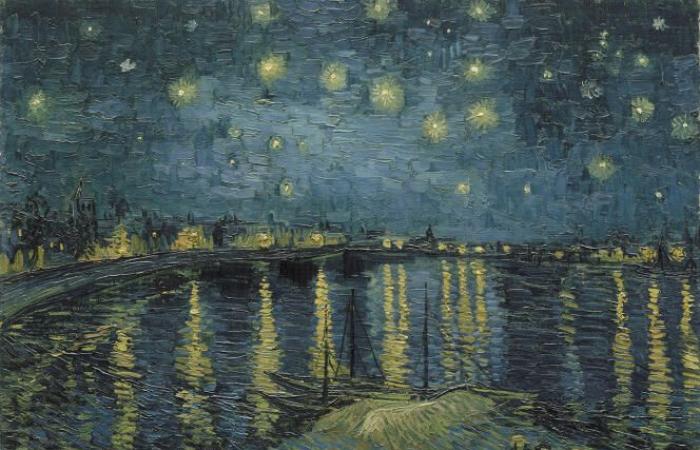THE MORNING LIST
Dreaming under the stars or under the moon with Van Gogh, admiring the modernity of Chinese porcelain, seeing all the facets of Miro or Henri Cartier-Bresson: so many suggestions for an artistic summer.
Van Gogh’s “Starry Night” is emulated in Arles
She came back ! Painted on the banks of the Rhône, in Arles, in 1888, The starry Night left the Musée d’Orsay for one summer to return to its point of origin. To celebrate this “cosmic poem” by Vincent van Gogh, the Arlesian foundation which bears his name summons supernovae, milky ways and constellations as contemplated by artists, from Edvard Munch and Georgia O’Keeffe to Lee Bontecou. Evocation of this end of the 19th centurye century when astronomy became a popular science, the exhibition recalls the influence of the stellar expert Camille Flammarion, and brings together a stunning series by Etienne Léopold Trouvelot, his contemporary: inspired by the sky that he observed from the telescope from Harvard, he draws solar flares and nebulae in pastel. Certainly one of the revelations of this nighttime stroll. But today’s artists are just as inspired by the skies: silver sunflowers by Dove Allouche, sublime evocation of the Alyscamps by Djabril Boukhenaïssi, collages by Jean-Michel Alberola, pertinently remind us of this advice from Aragon: “Let infinity in.” E. Le.
“Van Gogh and the stars”, Van Gogh Foundation, Arles. Until September 8.
The Stations of the Cross by Kader Attia in Montpellier

First major exhibition by Kader Attia in France since the one held at Mac Val in Vitry-sur-Seine in 2018. This one, like the previous one, responds to requests from architecture. The Mo. Co being made of several superimposed levels, linked together by stairs, the artist remembered the Divine Comedy of Dante, but by introducing an important modification: paradise is below. The journey therefore begins with purgatory: a set of works which, from the diverted object to the video and the installation, show some of the vices of contemporary societies. A second, on the floor below, plunges into hell, into the horrors of war, a subject unfortunately inexhaustible. You have to cross it to sink even lower and reach what would be a contemporary version of paradise: a world where humankind and nature find balance. The construction of the exhibition thus affirms that artistic creation, for Attia, is understood neither without a thought of historical events, nor without a spiritual aspiration. Ph. D.
You have 82.65% of this article left to read. The rest is reserved for subscribers.








